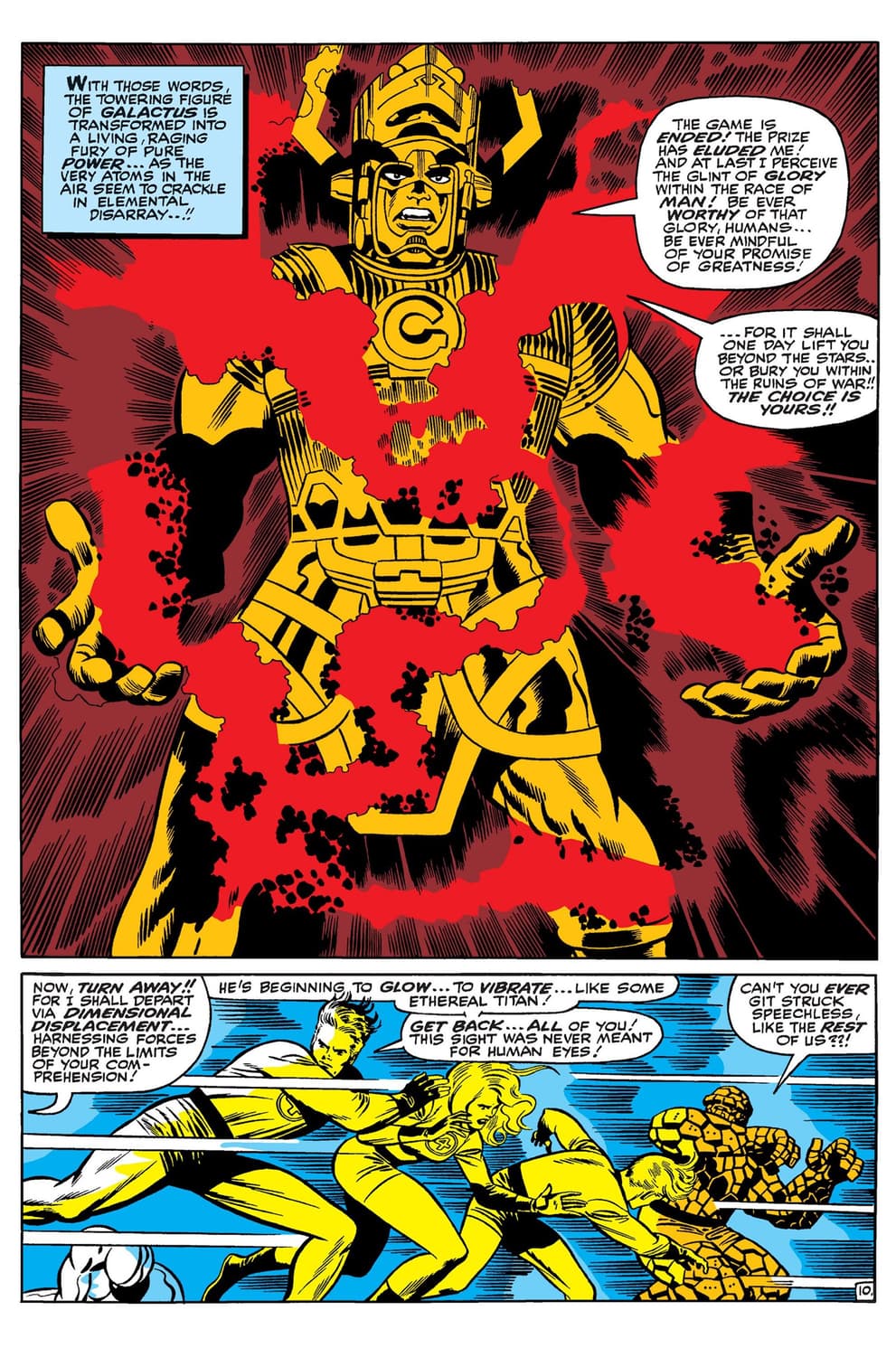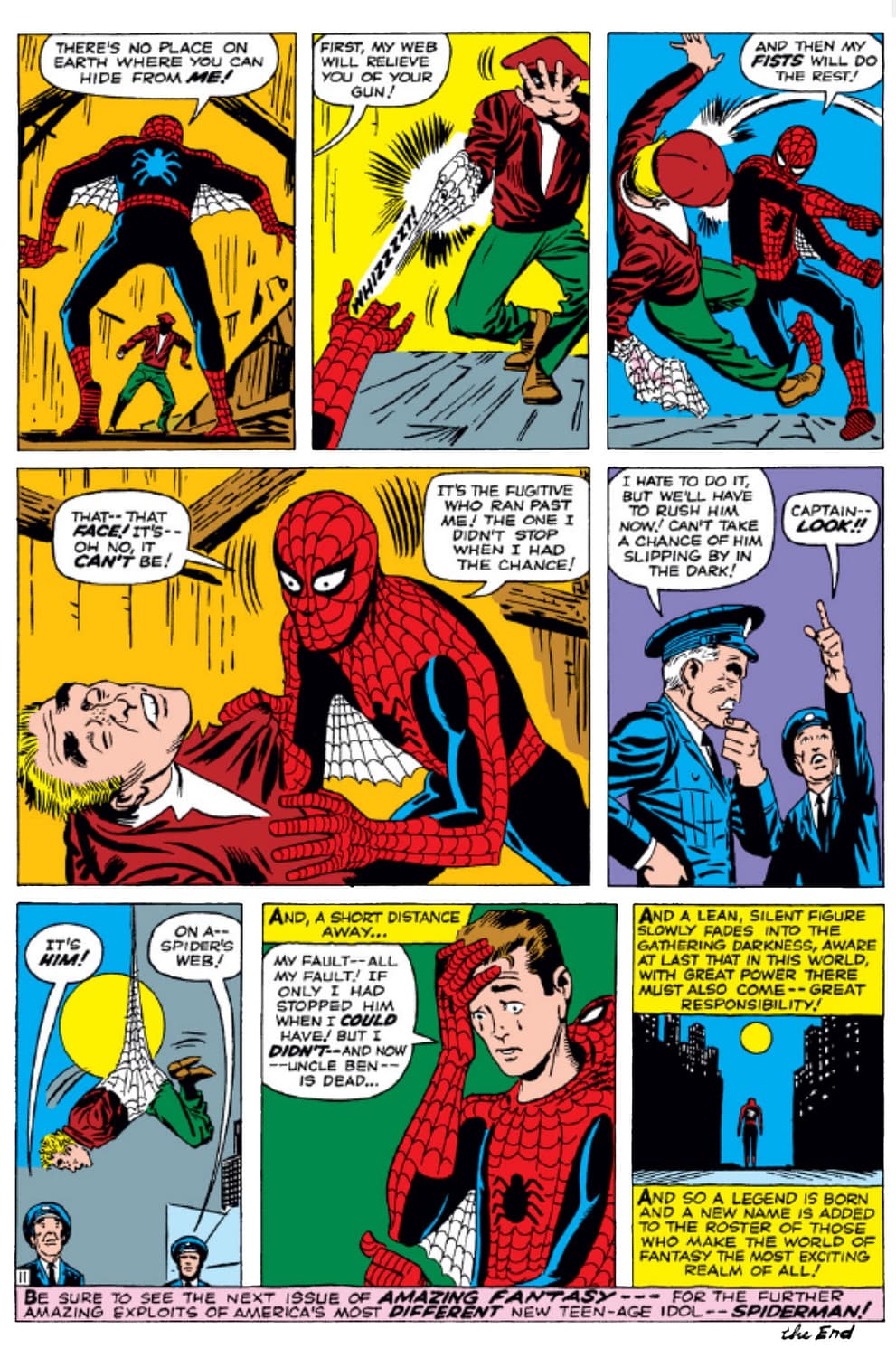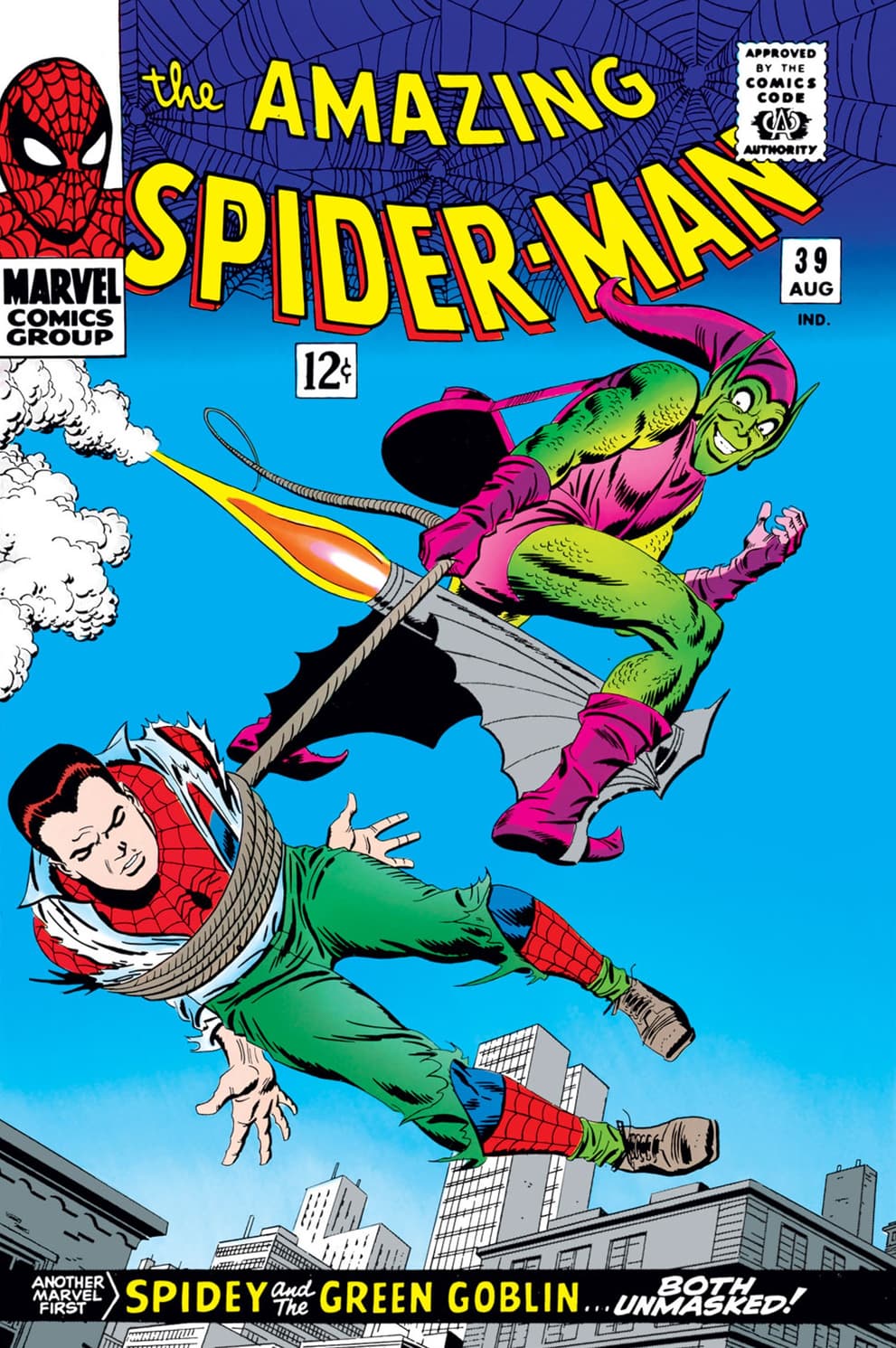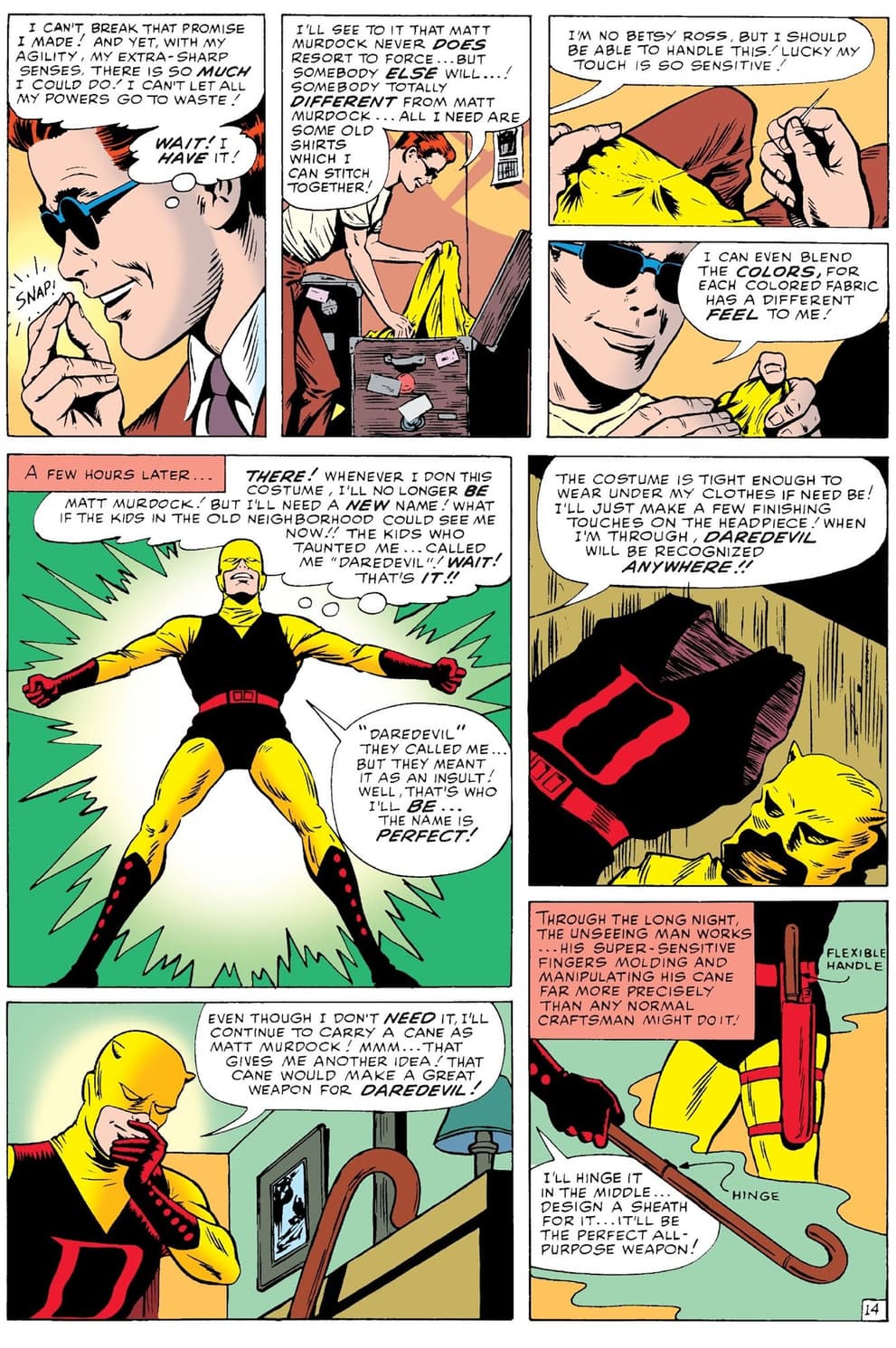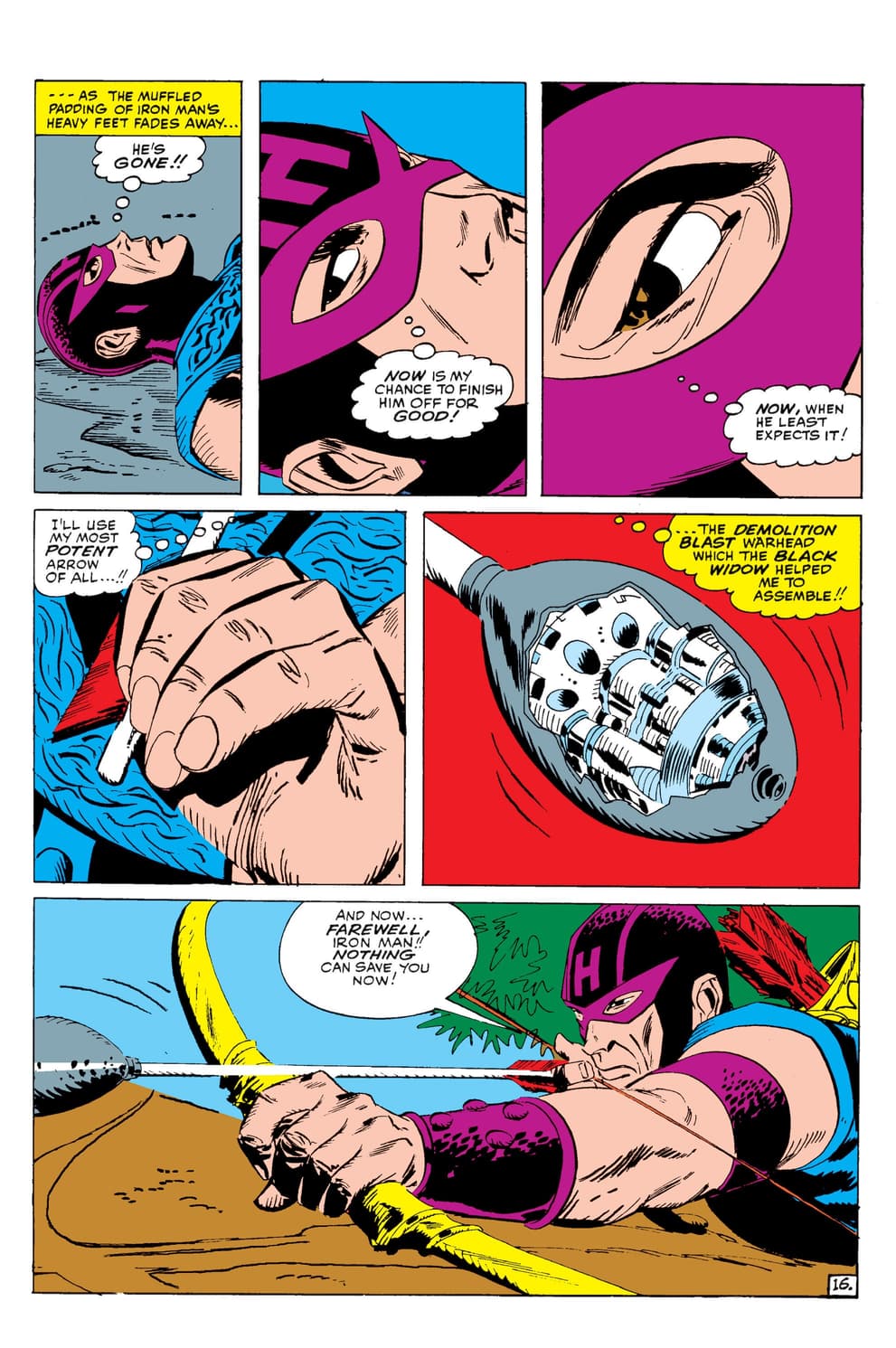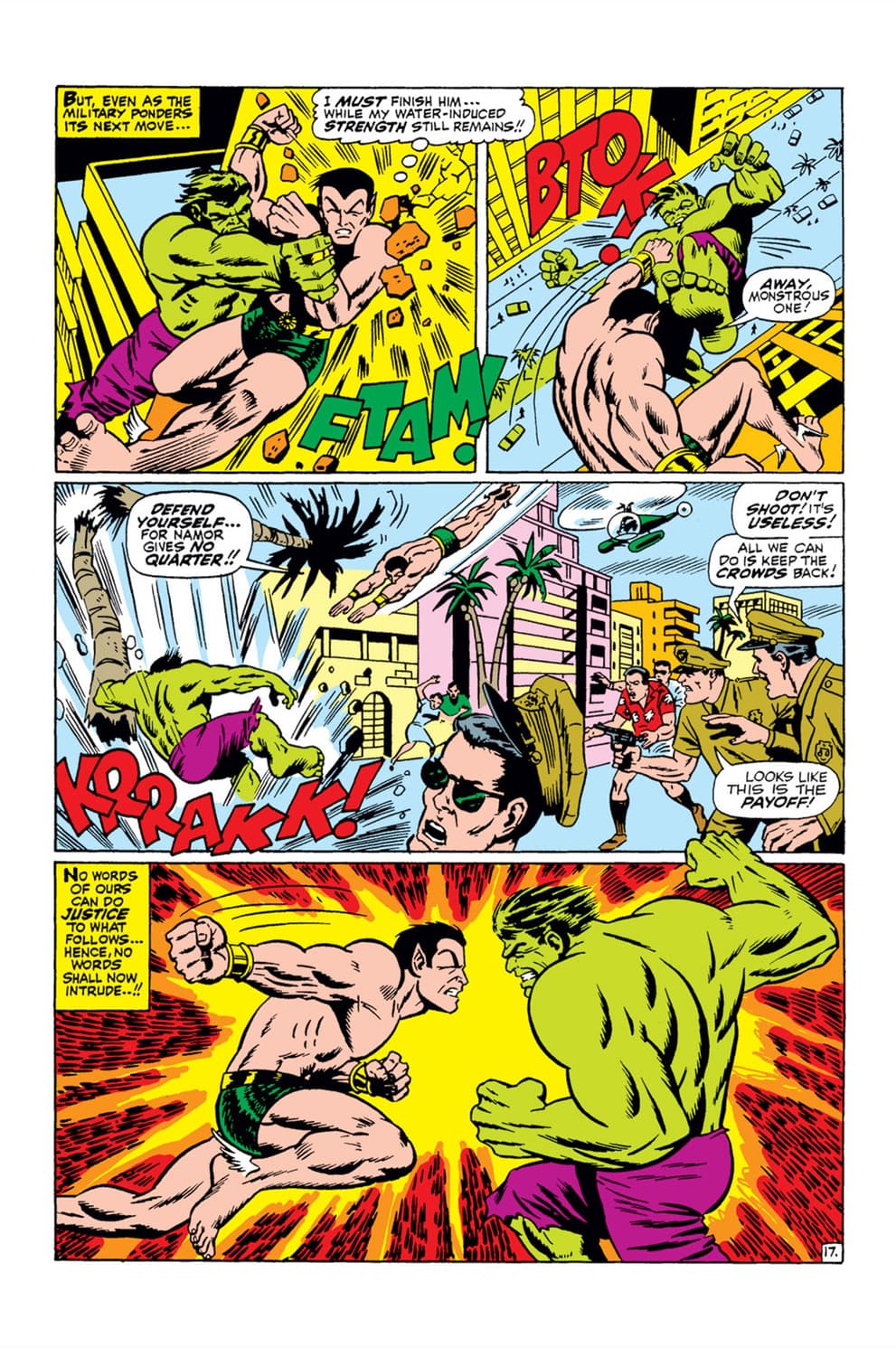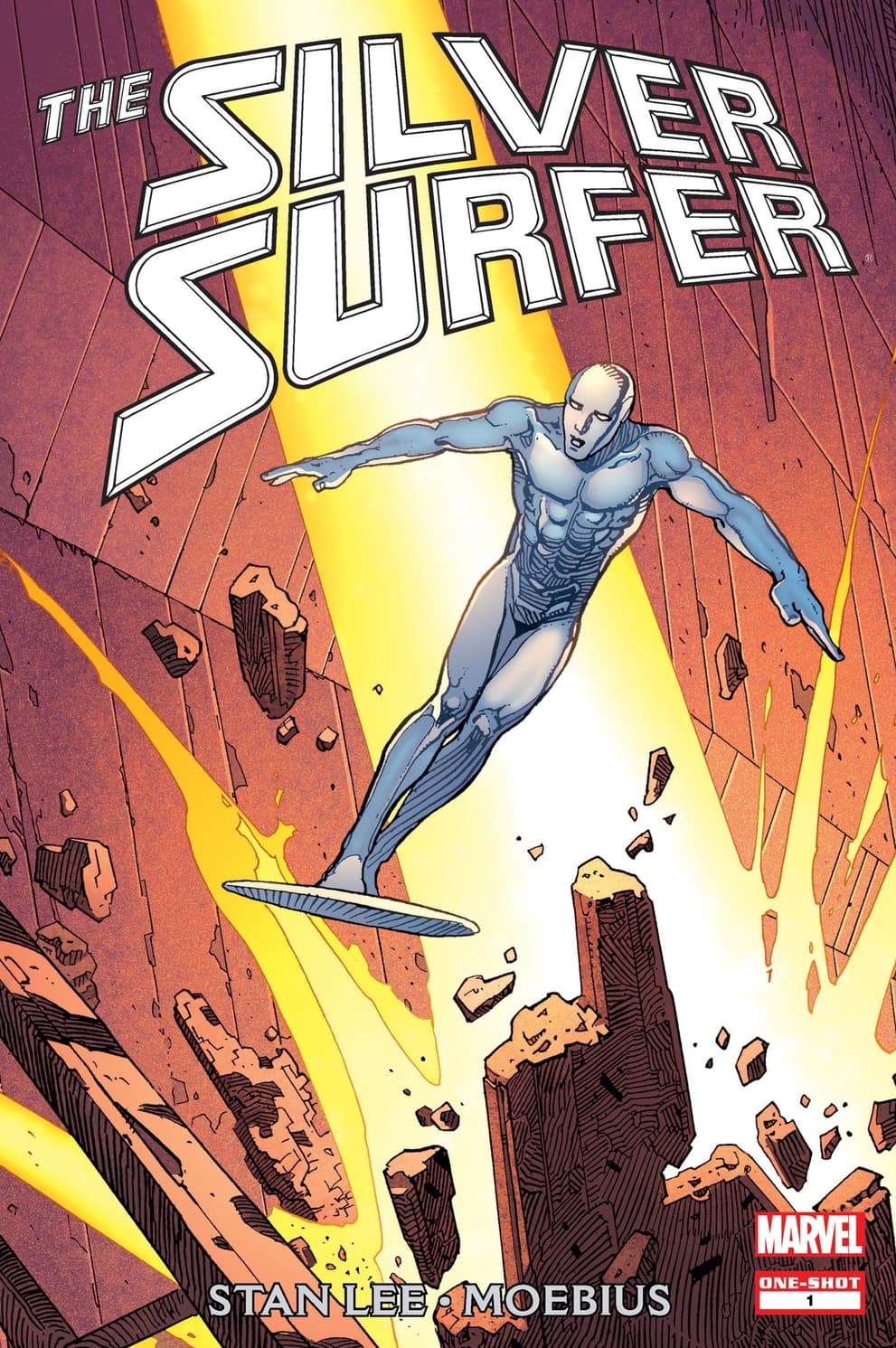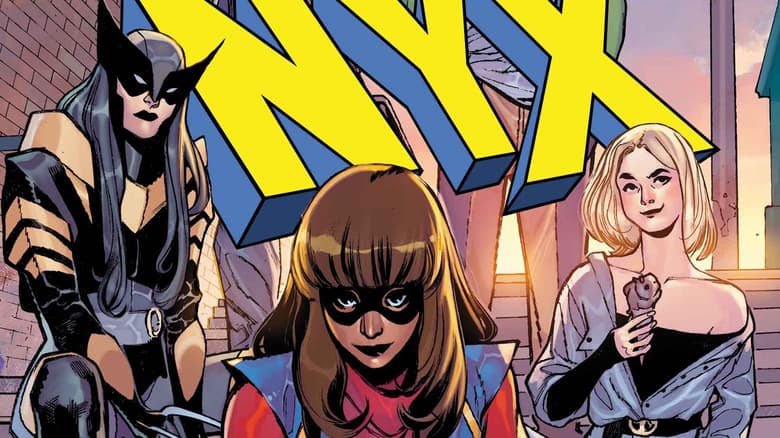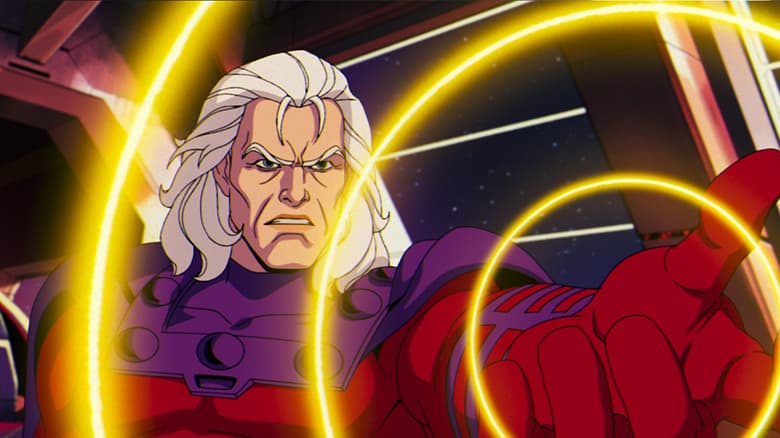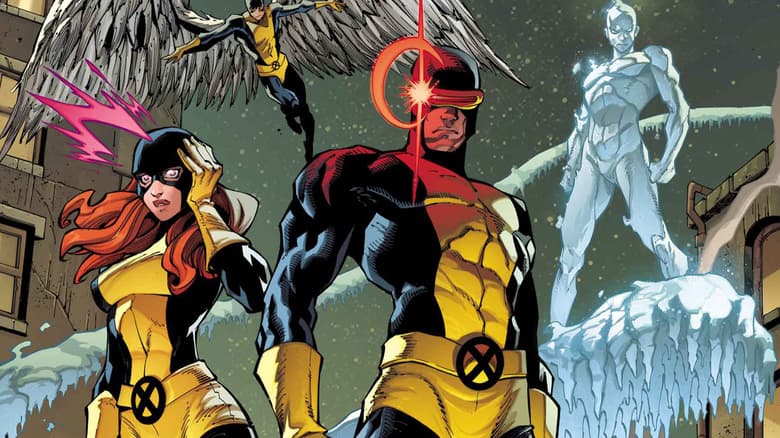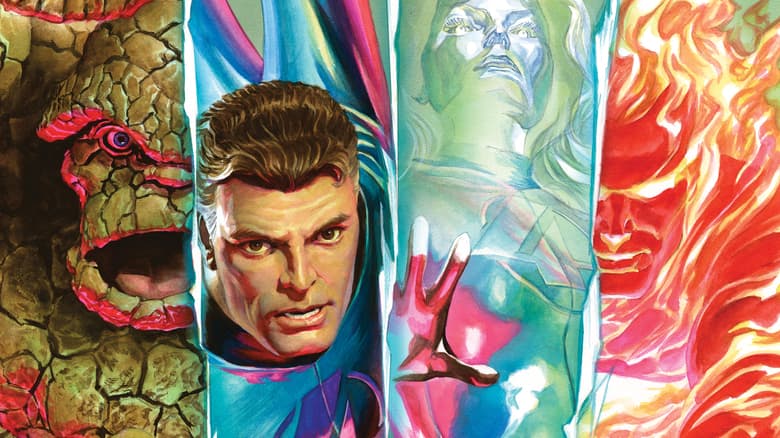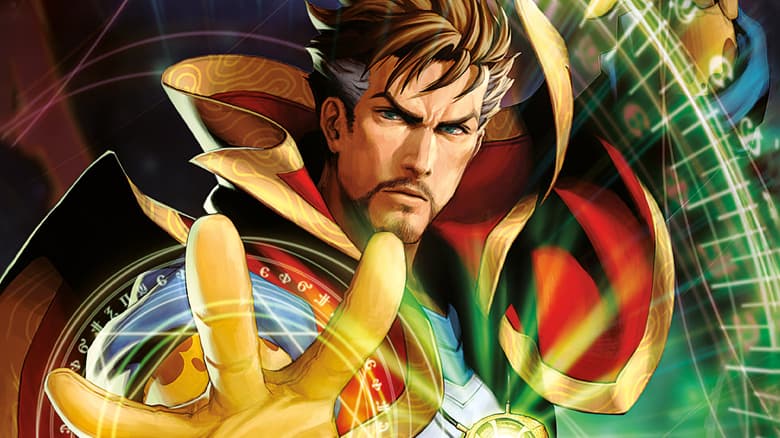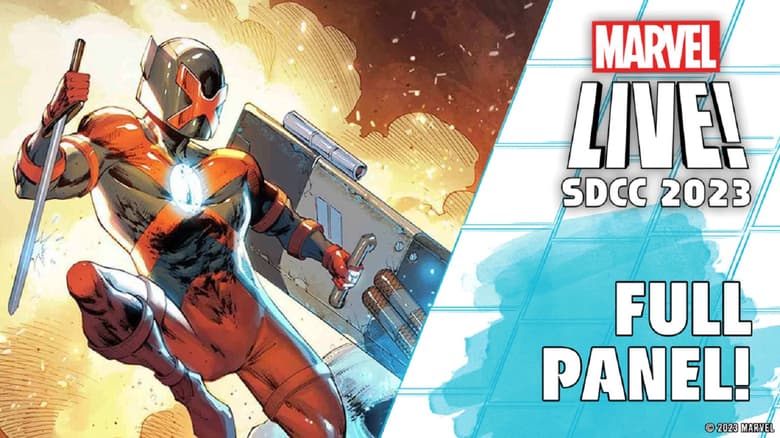Stan Lee's Best Collaborations
In celebration of Stan Lee's 100th birthday, check out some of his greatest collaborations with artists like Jack Kirby, Steve Ditko, John Romita, Moebius, and so many more!
Join Marvel.com all month long to celebrate Stan Lee’s 100th birthday! Share your own favorite Stan Lee memories and creations on Twitter, Facebook, Instagram and more with #StanLee100.
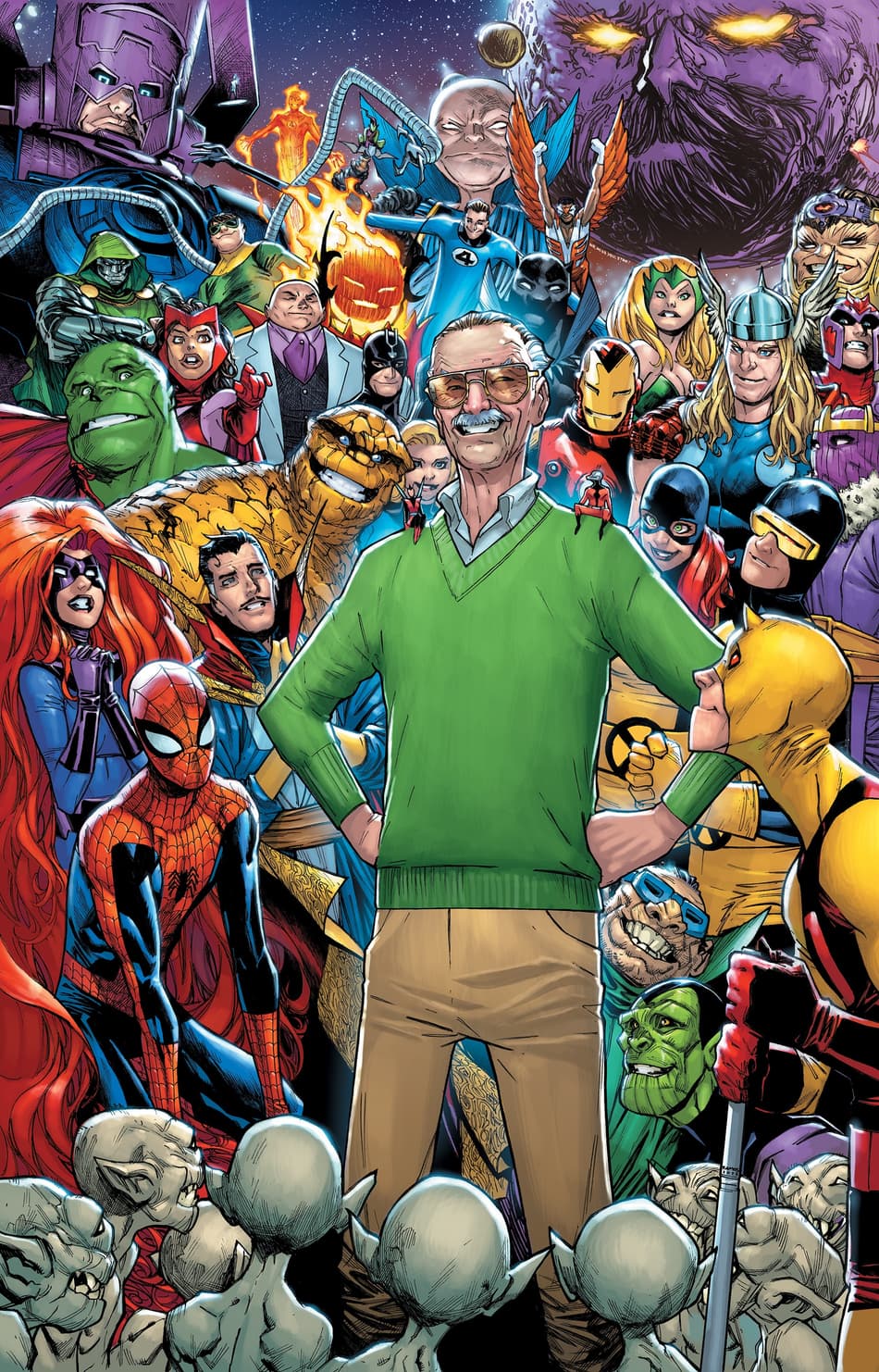
As a writer, scripter, and editor, Stan Lee worked with an awe-inspiring roster of artists to co-create iconic characters like Spider-Man, the Fantastic Four, the X-Men, Hulk, Thor, and many more. Over a half-century since their initial creation, the characters and stories that Lee and his collaborators made have become pop culture icons and truly timeless tales.
To celebrate Stan “The Man” Lee’s 100th birthday, we’re taking a look back at some of his collaborations on Marvel’s greatest stories. While Lee regularly worked with many of the artists mentioned below, we’ll just be highlighting one fan-favorite story for each of his collaborators here.
JACK KIRBY – THE COMING OF GALACTUS
With FANTASTIC FOUR (1961) #1, Stan Lee and Jack Kirby kicked off the Marvel Universe’s Silver Age with a new kind of dynamic Super Hero story featuring compellingly relatable characters, wildly imaginative artwork, and dramatic high-stakes action. Throughout the FF’s continuing adventures and across the burgeoning Marvel Universe, those qualities went on to define the iconic comics duo’s legacy.
In FANTASTIC FOUR (1961) #48-50, one of their best tales, Lee and Kirby introduced another two Marvel icons. Featuring colors by Stan Goldberg, inks by Joe Sinnott, and letters by Artie Simek and Sam Rosen, “The Coming of Galactus” saw the FF overwhelmed by the immense power of the world-devouring Galactus and his Herald, the Silver Surfer, during their first encounter. From Kirby’s stunning cosmic designs and apocalyptic action to the Surfer’s moral transformation, this story still stands as a masterpiece of comic book storytelling.
STEVE DITKO – AMAZING FANTASY #15
In just 11 pages, Stan Lee and Steve Ditko created one of Marvel’s signature heroes and gave him a timeless origin. With colors by Stan Goldberg and letters by Artie Simek, AMAZING FANTASY (1962) #15 introduced a teenage Peter Parker who developed fantastic abilities from a radioactive spider bite, only to lose his beloved Uncle Ben due to his own inaction. With a timeless meditation on the nature of power and responsibility, this tragic origin story gave Spider-Man a philosophical foundation that remains his guiding light today.
Ditko’s art gives Spider-Man a nervous, twitchy energy that perfectly captures Peter’s swells of emotion as this tragedy unfolds. Together, Lee and Ditko built on this success by filling out Spider-Man’s world with an iconic supporting cast and a fan-favorite rogues’ gallery of formidable villains. Later, they also co-created Doctor Strange and chronicled his magical, psychedelic adventures.
JOHN ROMITA – SPIDER-MAN UNMASKED
After Steve Ditko stepped away from drawing AMAZING SPIDER-MAN (1963), John Romita took over as the Web-Slinger’s primary artist and gave Peter Parker’s world the glossy sheen and dynamic action that defined it for the rest of the era. With inker Mike Esposito and letterers Artie Simek and Sam Rosen, Stan Lee and Romita kicked off their seminal Spider-Man run by unmasking Spider-Man’s rival, the Green Goblin, as Norman Osborn for the first time in AMAZING SPIDER-MAN (1963) #39-40.
After following an ill Spider-Man, the Green Goblin learned Peter Parker’s secret identity and took him captive… But after unmasking himself and revealing his origin, Osborn seemingly forgot these revelations during a final fight with Spider-Man. As Romita’s distinctive style evolved throughout his run, he and Lee also brought iconic characters like Mary Jane Watson, Kingpin, and Rhino into Spider-Man’s world.
BILL EVERETT – THE ORIGIN OF DAREDEVIL
In 1939, Bill Everett created one of Marvel’s first heroes, Namor the Sub-Mariner, and chronicled his adventures for years. When he returned to Marvel in 1964, Everett and Stan Lee created another icon: Daredevil. Featuring inks by Steve Ditko and Sam Rosen, letters by Sol Brodsky, and additional art by Jack Kirby, DAREDEVIL (1964) #1 introduced Matt Murdock and revealed his heroic origin.
When a young Matt lost his vision to radioactive chemicals, he discovered that the accident also gave him enhanced sensory abilities. After his father was killed for refusing to throw a boxing match, Matt suited up as Daredevil to avenge his father, while balancing his vigilantism with a promising career practicing law. Although this was Everett’s only DAREDEVIL issue, it firmly established Daredevil as both a Super Hero and a character with a foot in the gritty world of crime stories.
JOHN BUSCEMA – SILVER SURFER VS. THOR
In 1968, the Silver Surfer graduated from fan-favorite supporting player to the star of a solo comic book series that mixed cosmic action with philosophical musings in allegorical tales that introduced characters like Mephisto. In SILVER SURFER (1968) #4, Stan Lee and John Buscema pit the former Herald of Galactus against Thor and the Asgardians in an extra-length epic.
Featuring inks by Sal Buscema and letters by Artie Simek, this issue saw Loki fight the Surfer before tricking him into traveling to Asgard to battle Thor. With an iconic cover showing the two heroes facing off, this story gave Buscema a perfect canvas to create bold action as the Silver Surfer's cosmic adventures collided with Asgard's high fantasy.
DON HECK – HAWKEYE’S DEBUT
Together with Stan Lee, Larry Lieber, and Jack Kirby, Don Heck co-created Iron Man in TALES OF SUSPENSE (1959) #39. After introducing the villainous spy Black Widow during an Iron Man adventure, Lee and Heck created another future Avengers superspy with the introduction of Hawkeye in TALES OF SUSPENSE (1959) #57.
Also featuring letters by Sam Rosen, this story saw Hawkeye fall into Black Widow’s web during his first outing as a costumed vigilante. To impress the spy, Hawkeye attacked Iron Man and put up a surprisingly strong showing against Tony Stark’s alter ego with nothing but his skill and signature trick arrows. Skillfully rendered by Heck’s self-inked, naturalistic style, Hawkeye soon moved over to THE AVENGERS (1963), where Heck continued to illustrate his adventures with the team for several years.
JIM STERANKO – THE STRANGE DEATH OF CAPTAIN AMERICA
Stan Lee and Jim Steranko’s collaboration on CAPTAIN AMERICA (1968) only lasted for three issues, but that revolutionary story still stands as one of the Avenger’s most visually stunning tales. Also featuring inks by Joe Sinnott and Tom Palmer and letters by Sam Rosen and Artie Simek, CAPTAIN AMERICA (1968) #110-111 and #113 introduced Madame Hydra and saw Rick Jones suit up as Bucky in a story that marked Captain America’s apparent death and triumphant return.
Having honed his style with NICK FURY: AGENT OF S.H.I.E.L.D. (1968), Sternako mixed psychedelic sequences, pop art sensibilities, and cinematic storytelling techniques with instantly iconic images of Captain America in action to create one of the most distinctive comics of the era.
GENE COLAN – THE COMING OF THE FALCON
After working together on DAREDEVIL (1964), Stan Lee and Gene Colan kicked off their seminal run on CAPTAIN AMERICA (1968) with a story where the Red Skull swapped bodies with Steve Rogers. While exiled on an island filled with the Red Skull’s former allies, Rogers found an unexpected ally in Sam Wilson, the man who would become his lifelong partner, in 1969’s CAPTAIN AMERICA (1968) #117-119.
Featuring inks by Joe Sinnott and letters by Artie Simek, this issue marked the debut of the Falcon, Marvel’s first African American Super Hero. He quickly proved himself to be Captain America’s equal as the duo trained and took down the Red Skull in pages featuring Colan’s signature layouts and dynamic action. By the end of Lee and Colan’s run, the Falcon was the series’ co-lead, with each issue advertising both Captain America and the Falcon on the cover.
MARIE SEVERIN – HULK VS NAMOR
After their stories appeared alongside each other in TALES TO ASTONISH (1959) for a few years, the Hulk and Namor the Sub-Mariner faced off against each other in an epic brawl. With inks by Dan Adkins and letters by Sam Rosen, TALES TO ASTONISH (1959) #100 by Stan Lee and Marie Severin saw the Puppet Master take control over the Hulk and set him against the Sub-Mariner in a brutal battle that spans over half of this extra-length story. Although Severin primarily worked as a colorist and production artist, her tight pencils brought the bombastic action of this fight to life, right before the Hulk and Namor stepped into their own dedicated comic book titles.
GIL KANE – HARRY OSBORN’S ADDICTION
At a time when any mention of illicit substances was effectively banned in comic books, Stan Lee and Gil Kane broke with convention and crafted a powerful anti-addiction tale with AMAZING SPIDER-MAN (1963) #96-98.
Featuring inks from John Romita, Frank Giacoia, and Tony Mortellaro and letters by Artie Simek and Sam Rosen, this three-issue story saw Harry Osborn struggle with drug addiction and an overdose just as his father returned to menace Spider-Man as the Green Goblin. Although this story was made to address a topical issue of its era, it still offers a compelling portrait of addiction through Kane’s energetic, timeless style.
MOEBIUS – SILVER SURFER: PARABLE
Years after stepping away from writing regularly, Stan Lee teamed up with European comics legend Moebius for SILVER SURFER: PARABLE (1988). Featuring colors by John Wellington and Mark Chiarello, this story brought Galactus to an Earth without Super Heroes.
With Galactus presenting himself as a god to a receptive populace, the Silver Surfer was forced to stand alone against his creator. Moebius’ distinctive sci-fi art found a perfect complement in some of Lee’s most thoughtful philosophical musings on the nature of humanity. With two masters of comic book storytelling at the peak of their powers, SILVER SURFER: PARABLE stands as a unique example of Marvel storytelling.
Read these Stan Lee stories, and many more, with the power of Marvel Unlimited!
Join us to celebrate Stan Lee's 100th birthday! Every week this month and into January, we'll offer a deep dive on Lee’s remarkable history, creations, and contributions. Follow along at https://www.marvel.com/stanlee100.
The Hype Box
Can’t-miss news and updates from across the Marvel Universe!

Movies
Sam Wilson Takes Flight in First 'Captain America: Brave New World' Trailer

TV Shows
Kathryn Hahn’s Agatha Harkness Returns in 'Agatha All Along' Trailer
